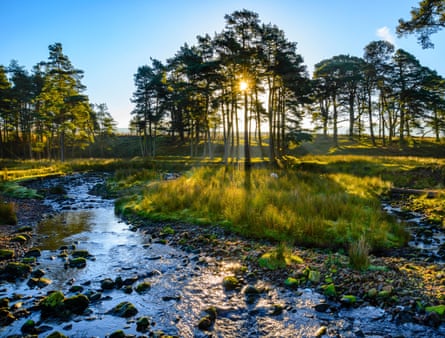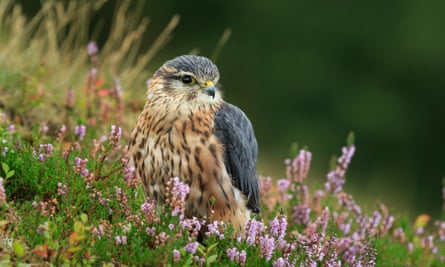Discovering the Mystical Bowland Forest: A BirdwatcherS Dream
A magnificent gray male hen harrier soars effortlessly over the moorlands, not me but this unusual raptor in search of a mate or perhaps its next meal.Within minutes of my arrival, I am captivated. Thes incredible and endangered birds are so elusive that encountering one feels like an extraordinary stroke of fortune.
Introducing the Hen Harrier
I am joined by Sonja Ludwig, an RSPB species and habitats officer committed to preserving the Forest of Bowland. She possesses extensive knowledge about these harriers. “They are familiar residents,” she shares.“They often return to their breeding grounds year after year. We frequently spot them hear. Beginners usually notice the males first due to their striking white rumps and dark wing tips.”
The hen harrier is affectionately known as a “gray ghost” or “spirit of the moors.” My excitement intensifies when I catch sight of another male gliding above us. “now you need to find the female,” Ludwig encourages.
After scanning our surroundings for just a few moments, we finally spot her—a stunning mix of brown and white feathers adorned with intricate streaks and an expressive face reminiscent of an owl when viewed head-on.
The Significance of Conservation Efforts
I won’t reveal specific locations; these precious hen harriers—the most persecuted birds of prey in Britain—require peace, especially during spring when they mate, nest, and raise their young. The key takeaway is that if you’re eager to observe them, they can be found right here in Bowland. As Ludwig aptly puts it: “Bowland demands some effort from visitors; it’s favored by hillwalkers but isn’t suited for those who expect easy access or roadside picnics.”
A Hidden Treasure in Northern England
The Forest of Bowland enchants me deeply; I gaze at it daily from my kitchen window after moving nearby four years ago—just outside what was once recognized as an area celebrated for its natural beauty.I often pass through it on my way to Lancaster during traffic jams on the M6 or while heading towards either Yorkshire Dales or Lake District national parks flanking Bowland’s sides. However, visits are infrequent—not just for me but likely many others—making it one of northern england’s most underrated rural landscapes.
While Lake District attracts around 18 million visitors annually and Yorkshire Dales sees over 6 million each year, visitor statistics for bowland remain elusive; historically estimated at only tens-of-thousands despite its proximity to densely populated areas like East Lancashire along with Preston and Blackpool.
The Unique Geographical Features
This landscape exudes mystery—formed by ancient seas followed by glacial activity—and further sculpted through relentless weather patterns over time into what we now recognise as moorlands interspersed with mountain-like features covered in heather and blanket bogs.The highest point here is Ward’s Stone at merely 561 meters (1,841 feet) above sea level while Pendle Hill stands out more aesthetically than any other fell within this region.

Navigating Access Challenges
Reaching certain areas can be challenging—the north-south road from Bentham through Chatburn crosses agricultural land at higher elevations while more scenic yet busier routes wind through Trough Of Bowland itself—a geological marvel known widely among locals.
Other roads skirt around this area before abruptly transforming into paths suitable only for motorbikes or hikers such as those along Roman roads connecting Slaidburn with Hornby.
Parking options are limited alongside infrequent bus services available—but recently launched number 11 bus has proven successful connecting picturesque spots back towards Clitheroe & Settle which both feature railway stations!

A Sanctuary For Wildlife Conservation Initiatives
Sweeping changes occured back in September 2004 when much land within bowlands became accessible thanks largely due countryside Rights Way Act allowing public access onto designated open-air recreation spaces! However walking/running/biking remains restricted solely where paths exist since many upland regions tend toward bogginess making navigation tough unless equipped properly!
Yet limited accessibility combined small crowds yields positive outcomes benefiting local wildlife populations including notable portions classified under special scientific interest status protecting vital habitats alongside internationally recognized avian species such as merlin (the UK’s smallest bird). Without expert guidance spotting one would’ve been nearly unfeasible!
Amazing Avian Encounters
<
p >During our excursion searching primarily focused on raptors led us across various other fascinating species too: meadow pipits skylarks curlews stonechats greylag geese among others! Notably two ring ouzels caught attention being red-listed indicating high conservation concern residing uplands.
As spring progresses keen-eyed birdwatchers will also encounter pied flycatchers redstarts wood warblers lapwings plus rare black grouse inhabiting reedbeds heathlands alongside common sandpiperdippers down riverbanks! Additionally large colonies lesser black-backed gull thrive here making UK territory crucially meaningful globally speaking!
< figure id = 'driven-grouse-shooting' data - spacefinder - role = 'showcase' >

< figcaption > Driven grouse shooting brings controversy surrounding conservation efforts.
